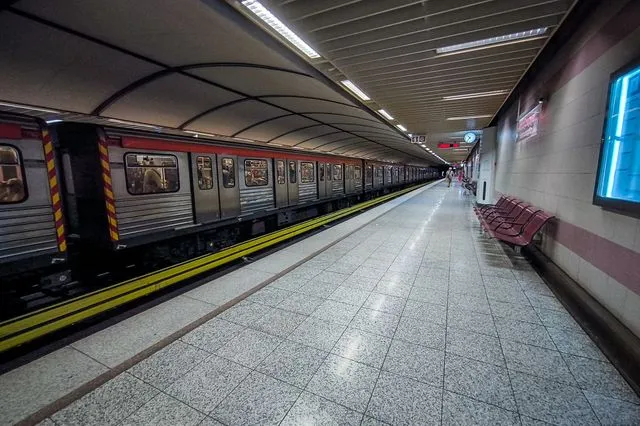Metro: Trains have exceeded maintenance limits by thousands of kilometres
Διαβάζεται σε 4'
Questions that demand answers arise regarding the condition of some of the trains operating on Metro lines 2 and 3 in Athens.
- 19 Νοεμβρίου 2025 14:25
In a report published on April 24, 2025, NEWS 24/7 detailed the malfunctions affecting ISAP trains, chiefly related to the braking system, and highlighted workers’ urgent pleas to the STASY administration to take action for safety. New information now shows that similar issues are affecting Metro trains operating on lines 2 and 3 of the Athens network.
NEWS 24/7 has been informed by two independent and fully reliable sources that 18 of the roughly 40 trains currently in service on the two lines have not undergone the required preventive maintenance. One might argue that a delay of a few hundred kilometres beyond the maintenance threshold is not particularly alarming.
The reality, however, is very different. One of these trains has exceeded the maintenance limit by 6,700 kilometres. Two others have surpassed it by 6,500 and 6,100 kilometres respectively. These discrepancies are far too large to ignore. In practical terms, this means that 864 wheels have not been inspected for wear, and neither the braking system nor the door safety mechanisms have been checked.
All this comes after the incident recorded on September 29, when a train travelled for several meters without brakes.
We presented the findings of our reporting to STASY’s administration via the company’s press office, addressing the following questions to CEO Athanasios Kottaras:
– Eighteen of the approximately 40 trains on Metro lines 2 and 3 have not received preventive maintenance.
– Several trains have exceeded the maintenance limit by 6,700, 6,500 and 6,100 kilometres.
Why is there such a delay? Is it due to staff shortages? When is the preventive maintenance for these trains scheduled?
The response came via STASY’s official press office email. It did not clarify whether Mr. Kottaras or another member of the administration was replying. The answer stated:
• A total of 52 trains operate on Metro lines 2 and 3. Those scheduled for daily service are inspected by STASY technicians and deemed fit for operation.
• Preventive maintenance is planned by each maintenance directorate per line and is carried out based on the manufacturer’s manuals.
• Trains undergo periodic maintenance checks at fixed intervals. However, unexpected technical faults lead to additional interim checks, which push back the scheduled maintenance dates.
• Safety protocol requires the immediate withdrawal of any train showing a fault or indication of a fault, so it can be inspected and repaired at the depot.
• STASY strengthened its technical staff in 2025 with 65 new permanent and fixed-term technicians. Two additional recruitment calls for 94 technicians and 10 engineers are currently underway. For 2026, 54 more technicians and 13 engineers have been planned.
The response appears general and does not directly address the figures presented in the report. Regarding preventive maintenance, the responsibility is shifted to the “competent maintenance directorate”, without providing clear data. On staffing shortages, STASY lists new hires — some of them fixed-term — but does not specify whether the current workforce is sufficient or whether shortages are indeed causing delays. Additional future hires are mentioned, which is positive, but the issue concerns the present situation, before those recruitments take place.
The reporting indicates that staff shortages do exist. These shortages appear to be affecting the smooth maintenance process and placing an additional burden on the already overextended and highly specialised technical workforce.







































